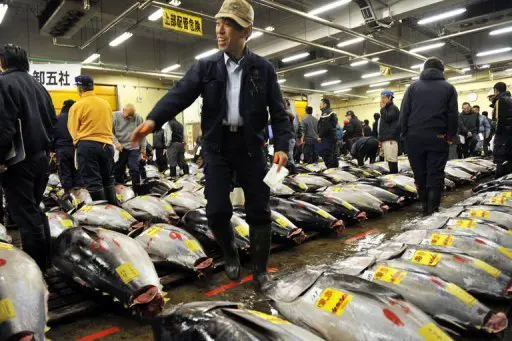The Food and Agriculture Organization (FAO) on Monday began a week-long, high-level meeting in Morocco to review rapidly shifting fish trading practices and patterns as aquaculture comes of age, UN officials said here.
It is the first time for the biennial high-level meeting to be convened in Africa. The gathering, held in Agadir through Friday, attracted top fishery officials from more than 50 countries this week to discuss sustainable trade practices in a 144-billion-U.S. dollar industry that provides developing countries with more export revenue than other meat, tobacco, rice and sugar combined.
Lower-income nations' exports of fish and fishery products reached 78 billion U.S. dollars in 2014, more than triple the value of global rice exports, FAO said in a press release.
"Trade in fish is much more important than people think, both in absolute and relative terms," said Audun Lem, deputy director of FAO's Fisheries and Aquaculture Policy and Resources Division.
Dialogues over the week-long summit will help FAO, its member countries and industry representatives understand new trends, opportunities and challenges in the fishing sector, fostering the development of strategies that can "best position developing countries to develop their fisheries sectors in a sustainable manner and to maximize their economic benefit from the growth we expect to witness," Lem said.
The globalization of the fish trade, driven in large part by fast growth in aquaculture, raises challenging needs for better rules and practices regarding traceability, labor conditions and the protection of biodiversity as well as commercial preparations for shifts in demand, consumption habits, climate change impacts, and the rapid rise of supermarkets with their corollary supply chains.
"Sustainably serving those lucrative markets is of critical importance to developing countries, where most fish are produced, whether caught in the wild or grown in cages or farm ponds," said the FAO news release.
Enabling traceability
One major topic for consideration at the high-level meeting is how to better trace products throughout the supply chain.
Ministers are also poised to agree in Agadir on FAO's proposed technical guidelines for catch documentation schemes, a set of documents testifying to the legal origin of the catch, facilitating traceability of the product throughout the supply chain.
This could become an important tool in curbing illegal fishing, a target concerning the conservation and sustainable use of the oceans, seas and marine resources under Goal 14 of the 2030 Agenda for Sustainable Development adopted by the UN General Assembly in September 2015.
The sustainable development agenda serves as the blueprint for the global development efforts for the next 15 years.
As fish production, processing and consumption often takes place in different countries, international collaboration and harmonization is critical to assure success in this effort.
Private sector engagement with a FAO project on catch documentation schemes for tuna has been unexpectedly high, reflecting industry interest in complying with sustainability goals.
Central to the effort is FAO's Agreement on Port State Measures to Prevent, Deter and Eliminate, Illegal, Unreported and Unregulated Fishing, which has now been ratified by 21 countries and is on course to have the 25 national ratifications as required to enter into full legal force by the time the Committee on Fisheries, an intergovernmental forum, meets in July.
Work will also focus on harmonizing certification requirements for fish exports to major international markets, where consumers as well as retailers are becoming more alert to quality, safety and legality concerns.
Emerging trends
New trends will also be among the subjects for discussion at the Agadir meeting, said the officials.
Aquacultural output has more than tripled to 78 million tonnes over the past 20 years, making it the world's fastest-growing food producing sector.
FAO expects wild-caught fish to grow modestly in volume terms while its share of the market for human consumption declines to 38 percent in 2030.
While most fish farms are in Asia, aquaculture's highest growth rates have of late been in Africa and South and Central America, where its marginal contribution to food security can be higher than elsewhere due to the fact that per-capita consumption of fish in these emerging regions has traditionally been low.
Aquaculture, typically far less seasonal and volatile than open-sea fishing, can help minimize food waste and and improve food safety, and incentivize investments in cold-storage facilities, all enabling supermarkets to plan and guarantee procurement.
The seafood menu is also changing in many ways, as exemplified by the fact that, for the first time in history, more fresh tuna has been flown to the United States than to Japan, FAO said.
Shifts in age-old patterns are likely to become a common feature in the future of fish, especially as developing countries increase their share of world imports. Since 2013, salmon and trout have replaced shrimp as the most important commodity traded in value terms. Enditem
 简体中文
简体中文



